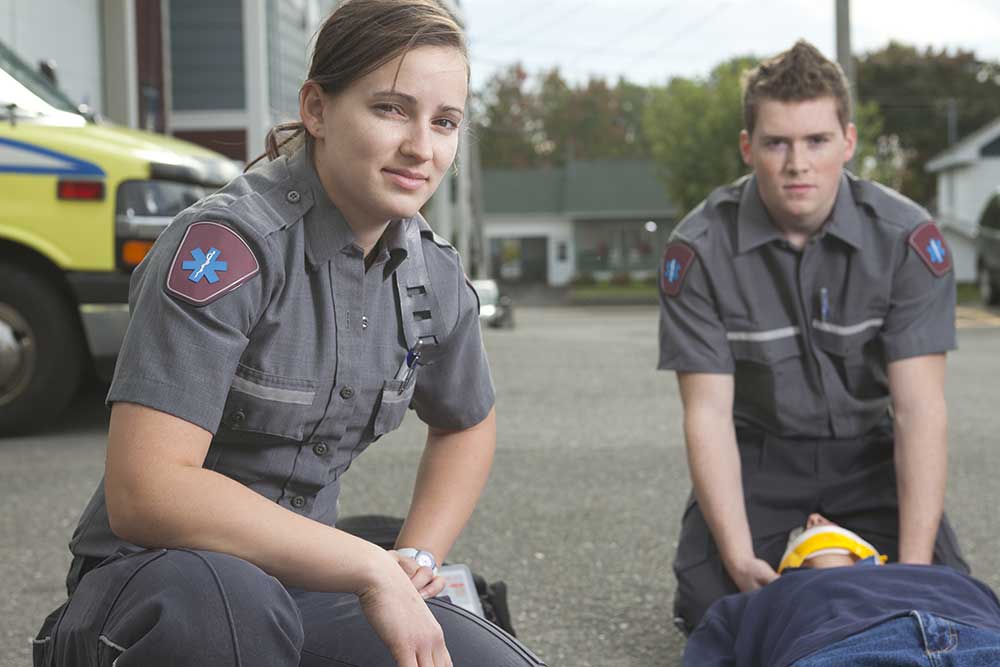Disclaimer: The information on our website is provided for general information purposes only. We make no representations or warranties of any kind, express or implied, about the completeness, accuracy, reliability, suitability or availability with respect to the website or the information contained on our website for any purpose. Any reliance on such information is therefore strictly at your own risk and we are not liable for any damages or losses arising out of or resulting from your reliance on any information contained on our website.
A paramedic performs medical services to patients and transports them to hospitals or medical facilities for treatment. Additionally, when they respond to emergency situations, they often work closely with police officers, firefighters, and other emergency responders. Next, watch a video to learn what a paramedic does.
How to Become a Paramedic
The requirements to be a paramedic are extremely rigorous. First, a paramedic has obtained the highest level of EMT (Emergency Medical Technician) certifications. They are also trained and certified to perform Advanced Life Aupport (ALS). ALS includes administering IV fluids, injections, medications and performing advanced respiratory procedures. Additionally, they treat wounds, perform CPR, deliver babies, and perform patient assessments.
Paramedics are often the lead member of a rescue team, with the most training and the most decision making power. This means that the requirements to be a paramedic include strong leadership skills and the ability to perform complex life-saving functions in extremely stressful crisis situations. A paramedic must keep a cool head and maintain authority amongst his or her team members in situations where a mistake can mean the difference between life and death.
Step 1: Meet Eligibility Requirements
To become a paramedic most states require you to be 18 years of age, pass a background check, and complete a CPR course. It’s a good idea to research your state eligibility requirements and then look for state-approved paramedic training programs in your area. For instance, your state may require you to earn an associate’s degree.
Step 2: Get your EMT-B License
You’ll first need to complete basic emergency response training and earn your EMT-B license. EMT (Emergency Medical Technician) training takes about 120-150 hours to complete and takes many people at least six months to complete. From there, you would take a test to become certified. Paramedics may choose to become EMTs and work in an EMT capacity to gain experience responding to emergency situations before continuing their training to become a paramedic.
Step 3: Get Trained as a Paramedic
Many communicate colleges offer paramedic training programs and you’ll want to research their minimum requirements before applying. Some programs may require you to have a certain amount of experience as an EMT first. Your training to become a paramedic may take 1-2 years to complete as these programs require you to complete about 1500 hours of learning and hands-on practice. The program will consist of assessing medical conditions, dealing with trauma, respiratory, and cardiac emergencies, using medical field equipment, and responding to emergencies. You’ll also learn how to administer intravenous medications and advanced wound care.
Step 4: Get Licensed as a Paramedic
In addition to training, a paramedic must get certified through the National Registry of Emergency Medical Technicians (NREMT). NREMT certification requires completion of a certified paramedic program and passing the national exam, both the written and practical parts. Most states also require you to get licensed; check with your states medical board for more information.
Job Description of a Paramedic

When an emergency call comes in from a 911 operator, a paramedic is sent to the scene to help the sick or injured person and, if necessary, transport them to a hospital. He or she may drive the ambulance or they may stay with the patient to monitor them and give emergency care. Some paramedics work with a helicopter flight team and would transport a patient by air and give medical treatment en route, normally caring for the serious or critically ill. They are skilled and qualified to asses a patient’s condition and manage cardiac, respiratory, and trauma situations.
They can give oral and intravenous medications, interpret electrocardiograms (EKGs) and operate complex medical equipment. Some paramedics work on a volunteer basis, but paid paramedics normally work full-time hours, including nights, weekends and holidays. This occupation is considered physically and mentally demanding as paramedics both indoors and outdoors as well as in all types of inclement weather. Their workday is very physical and can be stressful, sometimes involving life-or-death situations.
Free Teacher and Student Resources
There is a difference between a paramedic and an EMT all comes down to education. Visit UCLA’s website which outlines the difference between an EMT and Paramedic.
Paramedic Career Video Transcript
Ambulance sirens are a daily sound backdrop to city life. TV dramas and real-life news programs alike feature high-speed trips to rescue victims and speed them to life-saving medical care. Inside the ambulance, the on-site care providers are emergency medical technicians, known as EMTs and paramedics. These professionals respond to 911 emergency calls, evaluate a patient’s needs, and perform needed medical services, such as administering CPR, stabilizing a trauma victim, or dressing a wound. Some paramedics serve on rescue crews based on helicopters or airplanes. Most paramedics and EMTs work for ambulance services, local government, and hospitals. Their work requires frequent kneeling, bending, and lifting to care for and move patients.
EMTs and paramedics may be exposed to contagious diseases and dangerous situations, and may need to treat combative individuals who don’t want treatment. Their work schedules vary: volunteers are scheduled as needed, while most paid staff work full-time in 12- or 24-hour shifts, including overnights and weekends. A formal educational program and licensure are required for this field, though states vary in what tasks they allow EMTs and paramedics to perform. Some states may require paramedics to have an associate’s degree, for example, to qualify to administer medications and use complex equipment, such as EKG monitors. In case of emergency it’s reassuring to know that EMTs and paramedics are ready to respond at a moment’s notice.
Article Citations
Bureau of Labor Statistics, U.S. Department of Labor, Occupational Outlook Handbook, EMTs and Paramedics.
National Center for O*NET Development. 29-2041.00. O*NET OnLine.
The career video is in the public domain from the U. S. Department of Labor, Employment and Training Administration.

